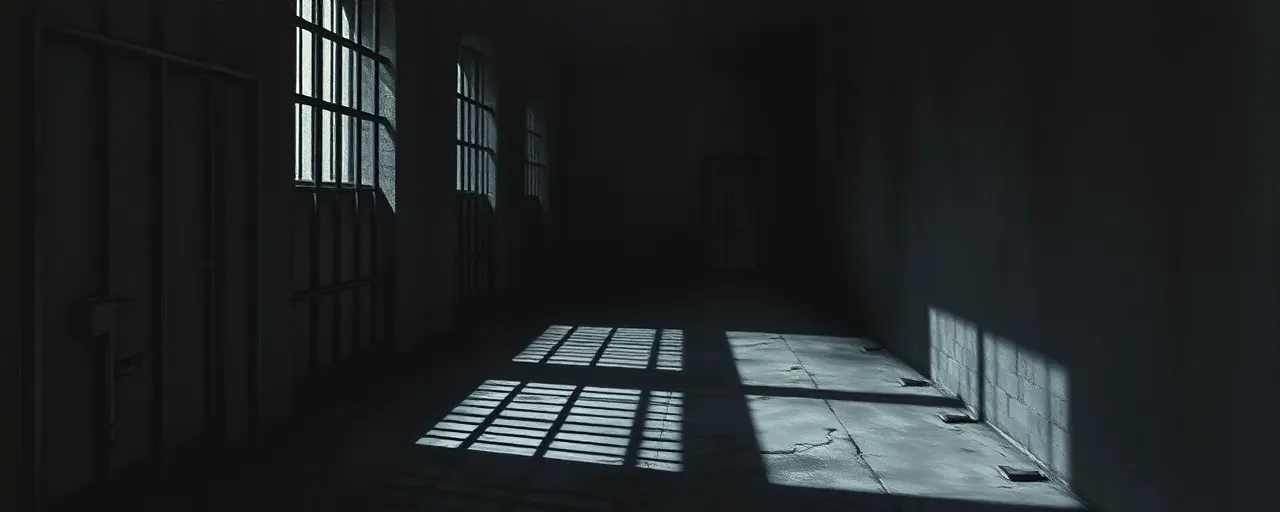A Killer Strikes Again
Ishmael Petty, a 56-year-old inmate at the U.S. Penitentiary in Florence, Colorado, has blood on his hands once more. On September 19, 2020, he murdered a fellow prisoner in cold blood, adding another corpse to his grim tally. This wasn’t a one-off explosion of rage; it’s a pattern. Back in 2002, he earned a life sentence for killing another inmate. In 2015, he assaulted two federal officers, netting a 60-year stretch. Now, with this latest indictment for first-degree murder, the Justice Department under Attorney General Pam Bondi is finally saying enough is enough, authorizing the death penalty. It’s about time.
Petty’s case hits you like a freight train. Here’s a man who’s spent decades behind bars, locked in the nation’s toughest supermax prison, and still he finds a way to kill again. The Administrative Maximum Facility, or ADX Florence, is built to house the worst of the worst, men so dangerous they can’t mingle with the general prison population. Yet even there, surrounded by concrete and steel, Petty’s violence erupts unchecked. This isn’t just a failure of one man; it’s a glaring signal that our justice system needs a harder edge to deal with monsters like him.
The Case for Capital Punishment
Let’s cut through the noise: the death penalty isn’t about vengeance, it’s about justice. Petty’s rap sheet proves he’s beyond redemption. Bank robbery in 1998, murder in 2002, assault in 2015, and now another killing in 2020. The guy’s a walking crime spree, and no amount of solitary confinement stops him. Federal prosecutors, backed by Bondi’s directive, see the writing on the wall. A notice of intent to seek execution isn’t some knee-jerk reaction; it’s a calculated move to protect society from a predator who’ll never quit. Data backs this up, too. Violent offenders like Petty reoffend at a staggering 63.8% rate within eight years of release, often faster and harder than others.
Opponents of capital punishment will wring their hands, citing a dip in public support, down to 53% this year, or whining about racial bias and botched executions. They’ll point to drug shortages for lethal injections or dredge up Furman v. Georgia from 1972, when the Supreme Court hit pause on the death penalty over arbitrary sentencing. Fair enough, history shows flaws. But since Gregg v. Georgia in 1976, we’ve tightened the process with bifurcated trials and automatic reviews. This isn’t the Wild West; it’s a system that’s evolved to target the truly irredeemable, like Petty. The bleeding hearts can cry all they want, their pleas fall flat when you’ve got a guy racking up bodies behind bars.
Prison Violence: A Broken System?
ADX Florence isn’t some cushy lockup. Inmates spend 23 hours a day in concrete boxes, eating through slots, exercising in cages. It’s designed to crush the human spirit, to keep the Ted Kaczynskis and El Chapos of the world from causing more havoc. Yet Petty’s murder spree shows the cracks. Federal prisons nationwide wrestle with violence, from stabbings like Derek Chauvin’s to staff beatdowns at places like Lee Federal Prison. Understaffing and lax oversight let chaos fester, even in a fortress like ADX. When a lifer can still kill, you’ve got to wonder: is the system too soft on the inside?
Some will argue the isolation itself drives men mad, pointing to a 2024 lawsuit that forced mental health tweaks at ADX. They’ll say Petty’s a victim of a cruel setup, that 23-hour lockdowns twist minds into murder machines. Nonsense. This guy was a killer long before he hit supermax. The real issue isn’t the conditions; it’s the failure to permanently neutralize threats. Capital punishment isn’t just punishment, it’s prevention. Six executions have happened in 2025 already, up from two last year, thanks to President Trump’s push to restore federal executions. That’s not cruelty, that’s clarity.
Justice That Sticks
Petty’s fate isn’t about coddling or reform; it’s about drawing a line. Attorney General Bondi and the U.S. Attorney for Colorado, J. Bishop Grewell, get it. They’re not swayed by the hand-wringing over prosecutorial discretion or the tired racial disparity stats, where Black inmates make up 41% of death row despite being 13% of the population. Every case stands on its own, and this one screams for the ultimate penalty. Petty’s not misunderstood; he’s a menace who’s had every chance to change and spit on them all. Execution isn’t a gamble here, it’s a guarantee that he’ll never kill again.
Look at the bigger picture. Violent offenders don’t just slip up; they strike fast and ugly. Studies show they’re back at it within 18 months of release, compared to 24 for non-violent types. Petty didn’t even need freedom to keep the carnage going. Letting him rot in a cell might feel noble to some, but it’s a risk we can’t afford. The Justice Department’s move to seek death isn’t a power trip; it’s a promise to taxpayers, to victims’ families, to every law-abiding citizen: we won’t let the worst among us keep winning.
